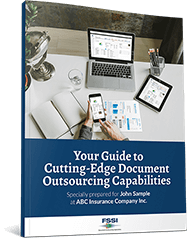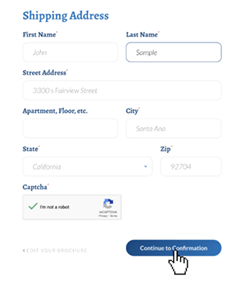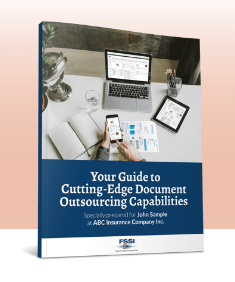Banks and Credit Unions, Compliance Communications, Data Security and Privacy, Disaster Recovery, Financial Printing, Healthcare & HIPAA
The Role of Print and Mail Outsourcing in Maintaining Regulatory Compliance
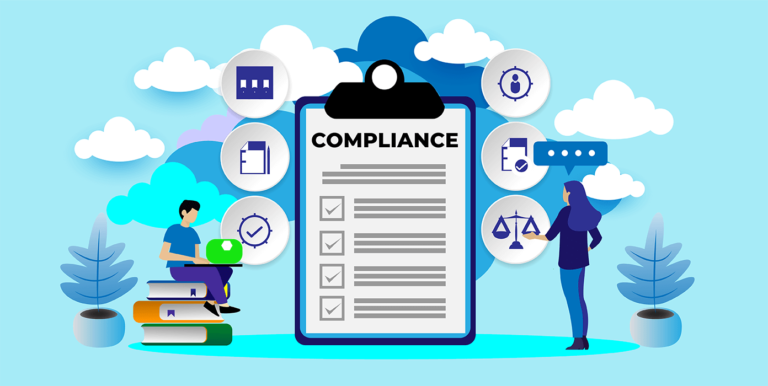
Regulatory compliance is important for financial services communications because it helps ensure that the information being communicated is accurate, fair, and transparent. This is important for protecting consumers, maintaining the integrity of financial markets, and ensuring the stability of the financial system.
Financial services firms are subject to a variety of laws and regulations that govern their compliance communications, including financial documents, public disclosures, advertising and marketing. By adhering to these regulations, financial services firms can help build trust with their customers and demonstrate their commitment to ethical business practices.
In this guide, we’ll discuss how you can ensure every aspect of your communications, from transactional to marketing communications remains compliant with existing and new regulatory requirements – and how a print and mail outsourcer can help ensure compliance when processing and delivering critical documents.
We will be answering these important print and mail compliance questions:
- What is Compliance Communications?
- How to Create Compliance-Ready Communications?
- How can companies ensure that their external and internal communications are compliant?
- What are the risks of non-compliant communications and how can they be mitigated?
- How can companies effectively train employees on compliance in communications?
- What is the role of a compliance officer in managing compliance communications?
- How can companies review and update their compliance communications on an ongoing basis?
What is Compliance Communication?
Compliance communications encompass a range of messages and information carefully crafted to uphold an organization’s compliance obligations. They encompass internal materials like training resources and policy manuals, as well as external documents such as transactional letters, notices, and marketing materials. These communications serve as a powerful means to educate employees and stakeholders about the rules and regulations that govern the organization’s operations.
The primary purpose of compliance communications is to foster a culture of compliance, deterring non-compliant behavior and promoting ethical conduct among relevant actors, whether they are employees or third parties. By disseminating vital information, organizations empower their workforce and stakeholders with a comprehensive understanding of their roles and responsibilities in upholding compliance standards.
In sectors like consumer finance, auto finance, mortgage, healthcare, utilities, and insurance, compliance communications take on heightened importance. They serve as a cornerstone of risk management strategies, ensuring that organizations remain fully aware of their compliance obligations and are equipped to fulfill them effectively. Compliance communications are an important part of an organization’s risk management strategy
How to Create Compliance-Ready Printed Communications
- Understand the regulations that apply to your industry. This includes federal and state laws, as well as industry-specific regulations. Familiarize yourself with these regulations so that you can ensure that your communications comply with them.
- Create a compliance policy. This policy should outline the steps that your company takes to ensure compliance in all its communications. This should include guidelines for creating and reviewing content, as well as procedures for reporting and addressing any non-compliant communications.
- Train your employees. Ensure all employees understand the importance of compliance and know how to create compliant communications. Provide training on the regulations that apply to your industry and the company’s compliance policy.
- Review all communications before they are sent. This includes all corporate communications, including documents, emails, social media posts, website content, marketing materials, and any other relevant communications. Ensure that these communications comply with all relevant regulations and the company’s compliance policy.
- Keep records of all communications. This will help you demonstrate compliance if your company is ever audited or investigated.
- Have a process in place for addressing non-compliant communications. This should include a way to report potential violations and a process for reviewing and correcting any violations that are identified.
How can companies ensure that their external and internal communications are compliant?
External and internal communications refer to the exchange of information outside as well as within an organization. To ensure that all communications are compliant, it is important to follow certain guidelines and best practices. Here are some tips for making external and internal communications compliant:
- Use secure communication channels: Use channels such as secure printing and mail practices, encrypted email or messaging apps to send sensitive information. This helps to protect the data from being intercepted by unauthorized parties.
- Follow privacy laws: Ensure that external and internal communications adhere to privacy laws such as the Health Insurance Portability and Accountability Act (HIPAA) in the US.
- Train employees: Educate employees on the importance of compliance and the consequences of non-compliance. This can help to prevent mistakes and ensure that all employees understand the policies and procedures in place.
- Use disclaimers: Use disclaimers on notices, envelopes and in emails to clearly state the intended recipient and the confidential nature of the information.
- Implement policies and procedures: Develop policies and procedures for handling sensitive information and ensure that all employees follow these guidelines.
By following these tips, you can help ensure that your company communications are compliant and that sensitive information is protected.
What are the risks of non-compliant communications, and how can they be mitigated?
There are several risks associated with non-compliant communications, including legal, financial and reputational risks.
- Legal risks: Non-compliant communications can violate laws, regulations, and industry standards, which can result in fines and legal action.
- Financial risks: Non-compliant communications can lead to financial losses, such as lost revenue, increased expenses and decreased shareholder value.
- Reputational risks: Non-compliant communications can damage a company’s reputation and credibility, which can lead to a loss of customers and business partners.
To mitigate these risks, companies should establish and follow policies and procedures for compliant communications, such as guidelines for handling confidential information, rules for using company resources, and procedures for handling sensitive PHI data. It is also important for companies to educate their employees about the importance of compliant communications and the consequences of non-compliant behavior.
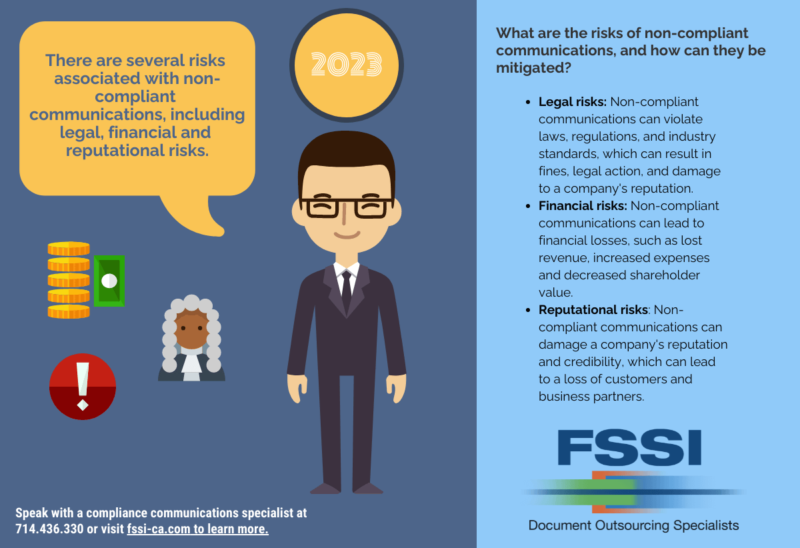
How can companies effectively train employees on compliance in communications?
There are several ways that companies can effectively train employees on compliance in communications:
- Develop a clear and comprehensive communications policy: A well-written communications policy can help employees understand what is expected of them when it comes to compliance.
- Provide regular training: Regular training can help ensure that employees are up to date on the latest compliance requirements and best practices. This can be done through in-person training sessions, online courses, or other forms of education.
- Make compliance a part of the company culture: Companies can foster a culture of compliance by promoting the importance of compliant communications and holding employees accountable for their actions.
- Use real-world examples and scenarios: Case studies and examples of real-world situations can help employees understand how to apply compliance principles in practical situations.
- Encourage open and honest communication: Encouraging employees to ask questions and report any concerns they have can help ensure that compliance issues are addressed promptly.
- Offer ongoing support and resources: Providing employees with access to resources, such as legal guidance or compliance hotlines, can help ensure that they have the support they need to make compliant decisions.
What is the role of a compliance officer in managing compliance communications?
The role of a compliance officer is to ensure that a company is following all relevant laws, regulations, and industry standards – in fact, this individual is an “industry expert.” In the context of compliance communications, a compliance officer may be responsible for:
- Developing and implementing policies and procedures for compliant communications
- Providing training and education to employees on compliance in communications
- Monitoring and reviewing communications to ensure compliance with company policies and applicable laws and regulations
- Investigating and responding to any alleged violations of compliance policies related to communications
- Working with legal and other stakeholders to resolve compliance issues related to communications
- Keeping up to date on industry developments and changes in laws and regulations that impact compliance in communications
- Reporting to senior management and the board of directors on the company’s compliance efforts related to communications
How can companies review and update their compliance communications on an ongoing basis?
There are several steps that companies can take to review and update their compliance communications on an ongoing basis:
- Regularly review and update company policies and procedures: As laws, regulations, and industry standards change, companies need to review and update their policies and procedures to ensure that they remain compliant.
- Monitor industry developments: Staying up to date on industry developments and changes in laws and regulations that impact compliance can help companies identify areas where they need to update their communications policies.
- Conduct regular audits and assessments: Regular audits and assessments can help identify any areas where the company’s compliance efforts may be falling short and allow the company to take corrective action as needed.
- Encourage employees to report concerns: Encouraging employees to report any concerns they have about compliance can help identify issues that need to be addressed.
- Seek legal guidance: Consulting with legal counsel can help ensure that the company’s compliance efforts are in line with applicable laws and regulations.
- Utilize technology: Using technology, such as compliance software, can help automate the review and update process and ensure that all communications are compliant with company policies.
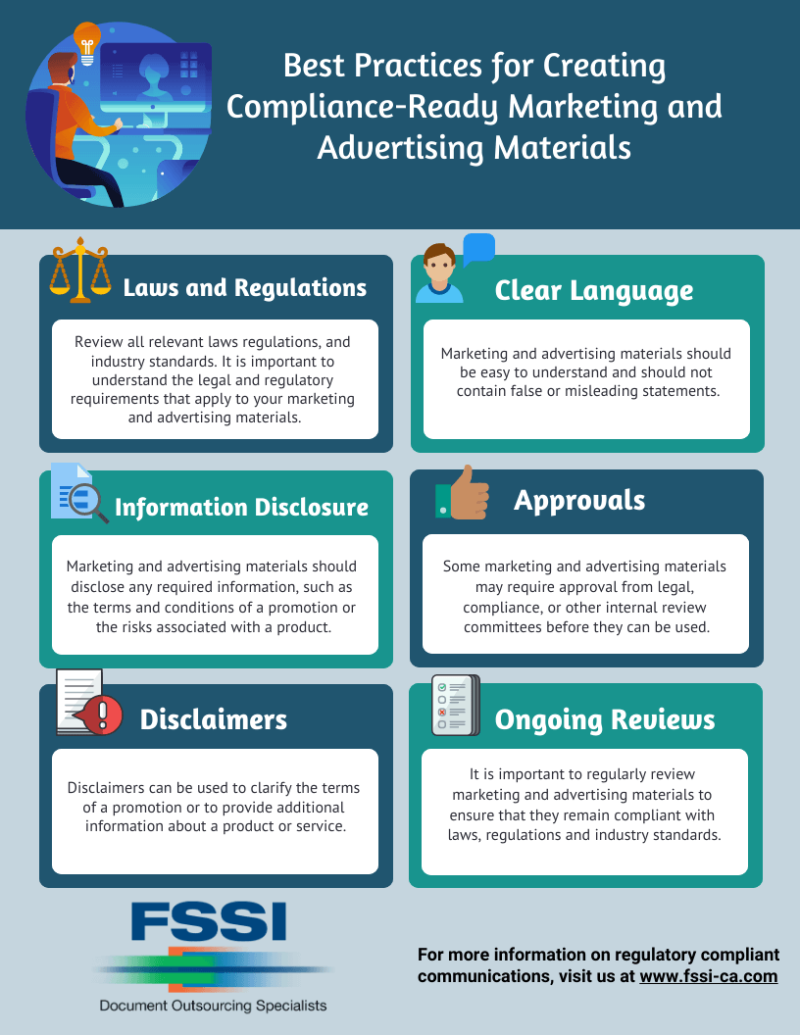
What are some best practices for creating compliance-ready marketing and advertising materials?
Here are some best practices for creating compliance-ready marketing and advertising materials:
- Review all relevant laws, regulations and industry standards: It is important to understand the legal and regulatory requirements that apply to your marketing and advertising materials.
- Use clear and accurate language: Marketing and advertising materials should be easy to understand and not contain false or misleading statements.
- Disclose any required information: Marketing and advertising materials should disclose any required information, such as the terms and conditions of a promotion or the risks associated with a product.
- Obtain necessary approvals: Some marketing and advertising materials may require approval from legal, compliance or other internal review committees before they can be used.
- Use disclaimers as needed: Disclaimers can be used to clarify the terms of a promotion or to provide additional information about a product or service.
The Importance of Compliance for Direct Mail Campaigns
Compliance is important in direct mail because it helps ensure that the messages and materials being sent through the mail are accurate, transparent and compliant with relevant laws and regulations. This is especially important in the financial services industry, where direct mail is frequently used to communicate with clients and the public about products and services.
If a financial services company does not comply with relevant laws and regulations in its direct mail communications, it can face fines, legal action and damage to its reputation. Therefore, it is important to ensure that all their direct mail communications are compliant with relevant regulations. This includes the content of the messages being sent as well as the format and design of the materials.
By creating compliance-ready direct mail communications, financial services companies can protect themselves and their clients and build trust and credibility with the public.
The Importance of Compliance in Transactional Print and Mail Outsourcing
Let’s say you’re not developing or producing your documents in-house. How do you ensure compliance when you work with a print and mail outsourcer (especially when compliance is so critical to your communications strategy)?
Document outsourcing companies serve as an extension of your compliance department. You can reduce risk, avoid penalties and increase production efficiency with a compliance partner that ensures your regulatory communications meet quality and delivery requirements.
These companies employ advanced technologies and compliance practices to maintain the security and integrity of your customer information, bringing expertise in highly-regulated industries. With the right processes and protocols, your critical transactional documents are produced accurately, delivered on time and tracked with proven, audit-ready processes that report compliance from file receipt to mail verification.
FSSI’s Compliance Communication Strategies
FSSI has helped top-tier clients in highly-regulated industries produce, deliver and track compliance and other kinds of communications for more than 40 years. The fully customizable solutions ensure that your printed or electronic compliance communications not only meet quality and delivery mandates but also engage readers’ attention and, when necessary, stimulate a response, using time-proven design techniques and document delivery technologies.
FSSI serves as your compliance communications partner, with in-depth knowledge of critical federal and state regulations, standards and disclosures related to the industries we serve.
- Secure Data Processing: Safeguard the security, privacy and accuracy of confidential data throughout the job lifecycle, from uploading any file format to processing, composition, output, archival and deletion. FSSI applies proven standards and streamlined procedures – including quality testing, secure PDF approval and automation.
- Quality Control: Internal processes and controls ensure the quality of each job, from file processing to mailing, including the review, verification and reconciliation of all production, postage and quality control documentation. You’ll also find multi-layered systems and an independent QA team for an all-encompassing quality check.
- 24/7 Tracking: Track your jobs at the piece level, all the way to delivery by the USPS. When it comes to your print, mail and electronic job tracking, no aspect goes unreported. There is automated validation that ensures the full reconciliation of each file, with a complete record of scans and activity with FSSI, with additional IMb tracking that tracks mailers once they enter the mailstream.
- In-Depth Reporting: Access regulatory compliance reporting from data receipt to mail and email verification. You’ll have complete transparency across all production stages with immediate metrics and reports for greater accountability and control, including SLA metrics that let you know that your jobs were mailed on time.
- Self-Managed Tools: Save time with an online letter management tool that provides quick-to-market change management and historical tracking of content while granting access via hierarchical control.
- Industry Certifications: SOC 2 and HIPAA compliance ensure that confidential data is processed following the strictest industry standards. FSSI participates in rigorous annual audits that demonstrate our commitment to comprehensive process controls to maintain the highest level of data security and accuracy.
- Business Continuity: To support disaster recovery and business continuity plans, FSSI invested in two Storage Area Network (SAN) systems – one for each location – for highly-efficient, reliable data processing and storage, and seamless replication in the event of a major disaster.
- Industry Expertise: Diverse, cross-industry insight and experience enable FSSI to meet unique document outsourcing needs – no matter how complex – with the ease and foresight of what it takes to design, process and deliver compliance-friendly documents for any industry.
How to Keep Your Communications Compliant
Compliance is a top priority. Whether you are producing internal or external documents, you must follow compliance protocols and ensure the accuracy and timely delivery of your compliance communication efforts.
Being well-versed in the laws that govern these communications doesn’t end at your doorstep. Compliant practices are equally essential when it comes to your vendors, especially one that produces and mails compliance documents on your behalf. Partnering with FSSI, a leading document outsourcing provider, ensures that every aspect of your communications, from transactional to marketing, remains compliant with new and existing regulatory requirements.
Call 714.436.300 today to speak with an FSSI outsourcing specialist to learn more about how cutting-edge technologies, custom proprietary solutions, tools and in-depth reporting can help meet ever-changing state, federal and industry-specific regulations and keep your organization 100% compliant.

